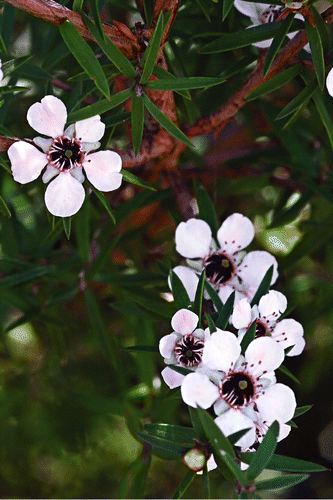
© Thomas Brendler
MANUKA
Botanical Name: Leptospermun scoparium J. R. Forst. & G. Forst., Myrtaceae
Common names: manuka, manuka myrtle, New Zealand tea tree, broom tea tree
Botanical Description: Bushy, conical-shaped shrub or tree, grows up to 6–8 m, stems from 10–12 cm in diameter. Leaves small lanceolate, green glossy, spiky-ended. Hermaphroditic flowers white or sometimes pink, about 10–12 mm across.
Where does it grow: Australia, New Zealand, Hawaii (introduced)
Key Active Ingredients: Yield of essential oil from the foliage ranging from 0.14% to 0.80% dry weight. Main active compounds are monoterpenes, sesquiterpenes and triketones. Activity against pathogens, e.g. Staphylococcus, Listeria and Streptococcus, and against some fungi, e.g. Trichophyton and Microsporum. Activity against gram-positive bacteria due to the presence of triketones.
Traditional therapeutic use: Manuka oil is used topically as an antiseptic with strong antibacterial activity. The leaves were used by Maori in steam baths. Pulped seed capsules were applied as wound dressings. Infusions from the leaves were drunk as a tea for various internal ailments.